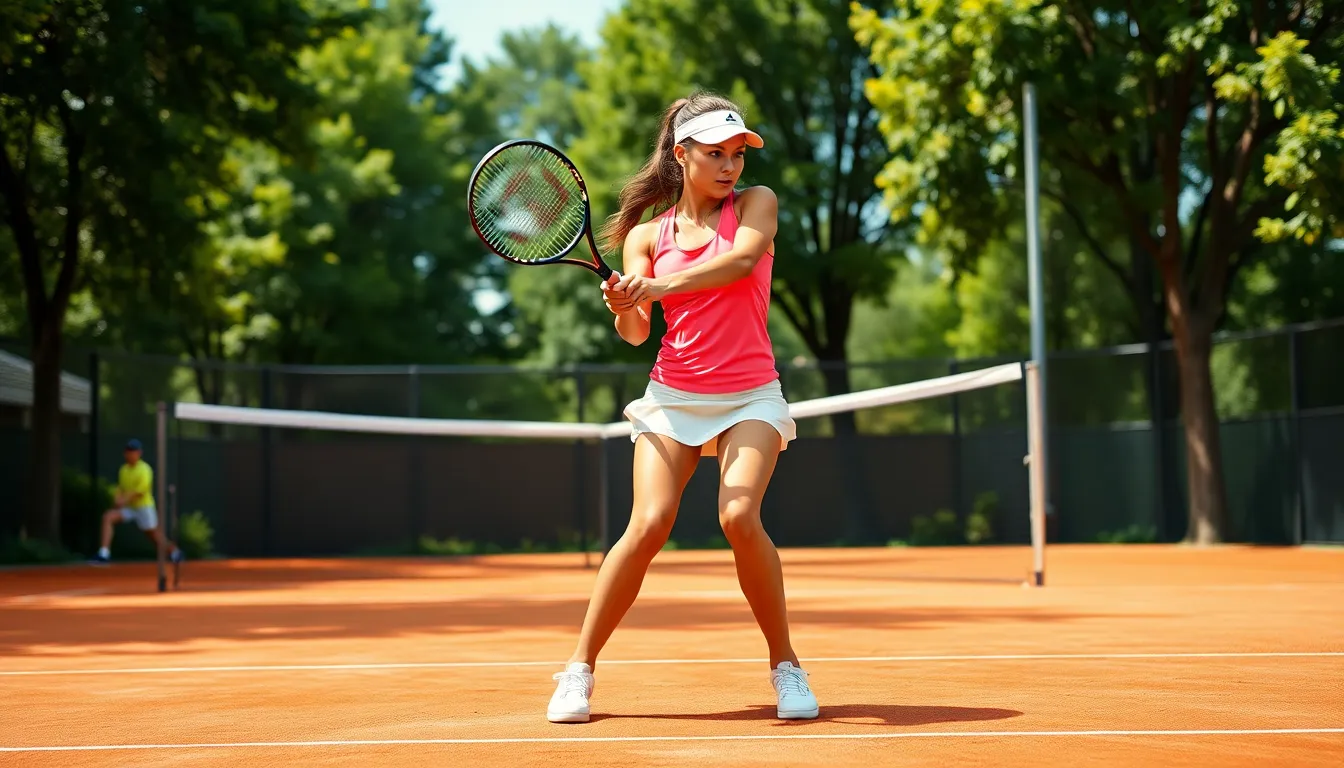Wondering how to master the art of rallying in tennis? This fundamental skill separates casual players from serious competitors on the court. A consistent rally not only keeps the point alive but builds the foundation for your entire game strategy.
When you’re rallying effectively, you’re controlling the pace, forcing your opponent to move, and creating opportunities for winning shots. It’s not just about hitting the ball back and forth—it’s about strategic placement, maintaining proper footwork, and developing the mental stamina to outlast your opponent. Whether you’re a beginner looking to build confidence or an advanced player refining your technique, improving your rally skills will transform your tennis game.
Understanding the Importance of Rallying in Tennis
Rallying forms the backbone of every tennis match, creating opportunities for strategic play and point-winning shots. In my years coaching players across all skill levels, I’ve observed how consistent rallying separates recreational players from competitors with serious aspirations. You’re not just hitting the ball back and forth during a rally—you’re captivating in a tactical battle that tests physical abilities and mental fortitude.
Tennis rallies showcase your technical proficiency while revealing your strategic thinking on court. Players who excel at rallying maintain control throughout points, dictating play rather than merely responding to opponents. Your ability to sustain purposeful exchanges directly correlates with match success, particularly against evenly matched opponents.
Strong rallying skills enable you to:
- Expose weaknesses in your opponent’s game
- Conserve energy through efficient court positioning
- Create openings for winners through strategic ball placement
- Build confidence through consistent shot-making
During my coaching sessions, I’ve found that players who dedicate practice time to structured rallying drills improve their match performance significantly faster than those focusing solely on serves or winners. The controlled pressure of extended rallies develops shot consistency, improves decision-making, and builds the stamina needed for competitive play.
Advanced players use rallying to manipulate opponents, gradually moving them out of position before delivering finishing shots. Your rally patterns can become a signature part of your playing style, reflecting your unique approach to constructing points. Mastering this fundamental aspect of tennis transforms your game from reactive to proactive, giving you greater control over match outcomes.
Key Elements of Effective Tennis Rallies
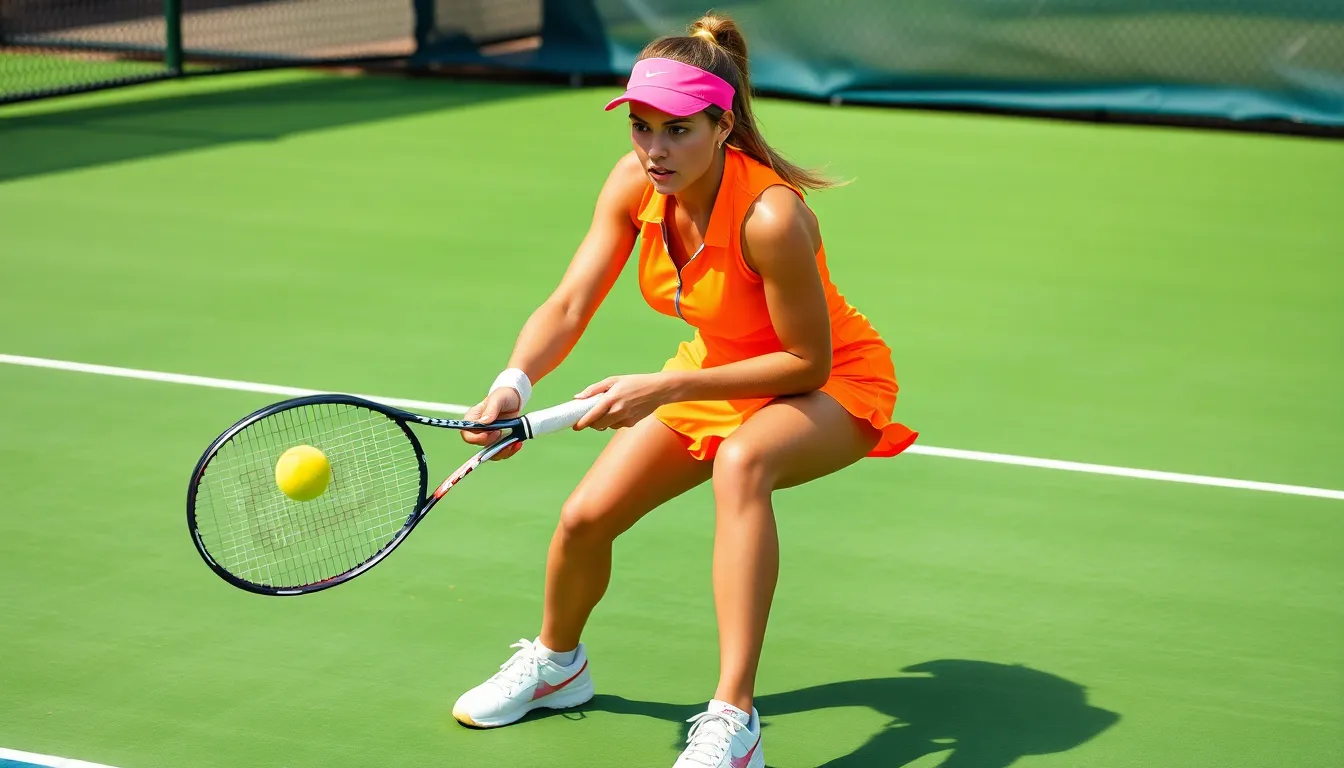
Effective tennis rallying combines technical skill, strategic thinking, and physical conditioning to maintain control during point exchanges. Mastering these key elements transforms your ability to dictate play and outmaneuver opponents on the court.
Footwork and Positioning
Footwork forms the foundation of successful tennis rallies, enabling you to reach balls with balance and precision. Quick lateral movements, recovery steps, and the split-step technique prepare your body to respond efficiently to incoming shots. Maintaining a central court position after each stroke minimizes unnecessary running and keeps you ready for the next shot.
“I’ve seen dramatic improvements in my students’ rally consistency simply by focusing on their foot placement,” says Azura Victoria, founder of tennisservetips.com. “Players who watch the ball intently and position themselves correctly can sustain rallies twice as long as those with poor footwork habits.”
Your stance plays a crucial role too—keep your knees slightly bent, weight forward on the balls of your feet, and racquet in front with proper preparation. This ready position allows for swift directional changes and proper weight transfer into your shots, creating more consistent rallies even against challenging opponents.
Shot Selection and Variety
Choosing appropriate shots during rallies significantly impacts your success rate and control over the point. High-percentage shots—those with greater clearance over the net and landing deeper in the court—reduce errors and build rally consistency. Cross-court shots provide both safety and strategic advantage, giving you more court to work with while creating challenging angles for your opponent.
Mixing shot types prevents predictability and disrupts your opponent’s rhythm. Alternating between topspin drives, slice backhands, and occasional flat shots forces adjustments and potential mistakes. Strategic depth variation—pushing your opponent back with deep shots before surprising them with shorter balls—creates openings and tests their movement patterns.
“During my coaching sessions, I encourage players to target their opponent’s weaker side consistently,” Azura shares. “One of my recreational players improved her match win rate by 30% simply by directing 70% of her rally shots to her opponents’ backhand during practice drills.”
Your rally shots should serve exact purposes—whether testing an opponent’s movement, setting up an approach shot, or creating space on the court. Each exchange becomes an opportunity to gain positional advantage or force a defensive return you can capitalize on with a winner.
Common Rallying Strategies for Different Court Surfaces
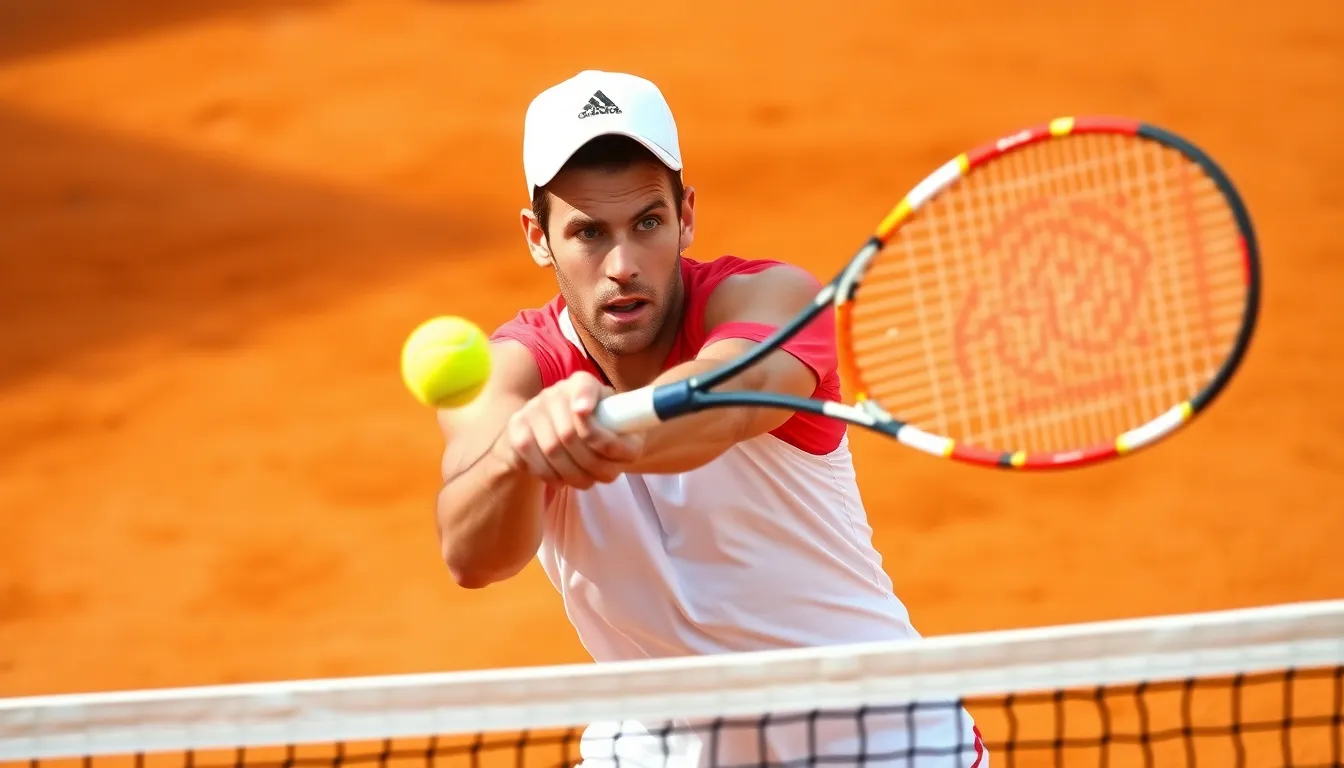
Court surfaces dramatically influence rallying tactics in tennis, requiring players to adapt their strategies for optimal performance. Different surfaces demand unique approaches to movement, shot selection, and point construction based on how the ball interacts with the court.
Clay Court Rallying Techniques
Clay courts transform rallying into a test of patience and physical endurance with their slow pace and high bounce characteristics. Players must master the sliding technique to efficiently reach wide shots while maintaining balance on this slippery surface. Generating topspin becomes essential on clay as it exploits the natural high bounce to create challenging angles your opponents struggle to return.
Point construction takes precedence over power hitting on clay, where the surface absorbs ball speed and makes hitting clean winners more difficult. Top clay court specialists like Rafael Nadal demonstrate how consistent, deep groundstrokes with heavy topspin can gradually wear down opponents during extended rallies that often exceed 15-20 shots.
“During my coaching sessions on clay, I’ve found that players who embrace longer rallies and focus on consistency rather than going for early winners typically see a 30% improvement in their match success rate,” notes Azura Victoria, drawing from her extensive clay court coaching experience.
Hard Court Rallying Approaches
Hard courts offer a balanced playing environment that rewards versatility and tactical awareness during rallies. These medium-paced surfaces provide consistent ball bounce, allowing you to employ a wider range of shot selections compared to other surfaces. Central court positioning becomes crucial on hard courts, as the predictable bounce gives you time to prepare for your next shot while limiting your opponent’s angles.
Mixing shot types forms the foundation of effective hard court rallying, where alternating between topspin, slice, and flat shots disrupts your opponent’s rhythm. Strategic shot placement targeting your opponent’s weaker side (often the backhand) can create openings for aggressive follow-up shots or force errors during extended exchanges.
How to Practice and Improve Your Rallying Skills
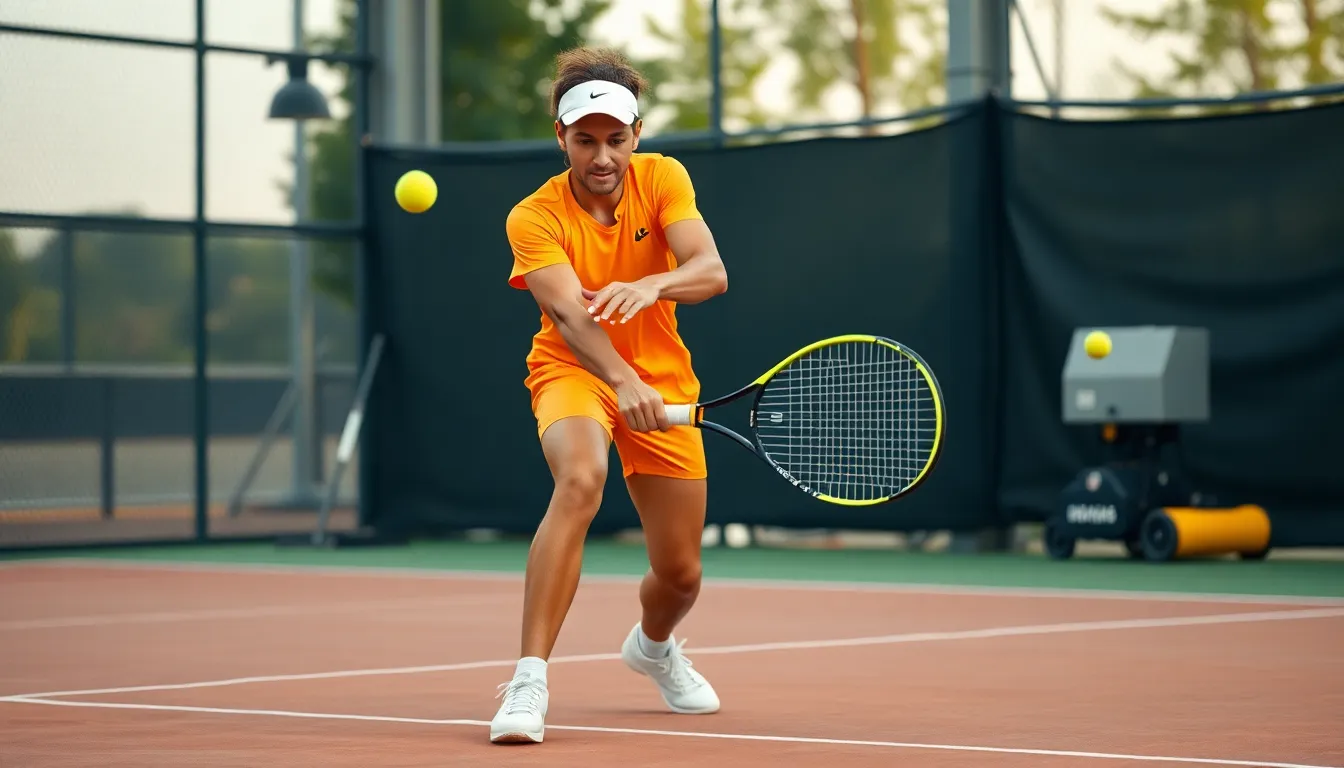
Effective tennis rallying demands consistency, strategic shot selection, and proper positioning. Mastering these skills transforms your game from reactive to proactive, giving you greater control over match outcomes.
Solo Drills for Better Rallies
Ball machine practice stands as the cornerstone of rally improvement when training alone. Set your machine to deliver consistent shots to exact court areas, gradually increasing speed and varying spin as your comfort grows. “I’ve seen players improve their consistency by 40% in just three weeks of structured ball machine practice,” notes Azura Victoria, founder of tennisservetypes.com.
Shadow swinging delivers remarkable benefits without requiring a ball. Spend 10-15 minutes daily practicing your groundstroke technique and footwork patterns. Focus on proper weight transfer and follow-through while imagining different rally scenarios.
Target practice enhances your shot precision dramatically. Place cones or targets in strategic court locations and aim to hit them consistently. Start with larger targets (3-4 feet wide) and progressively reduce their size as your accuracy improves.
Wall practice provides immediate feedback on your shot consistency. Rally against a wall for 15-20 minutes, maintaining a steady rhythm while working on directional control. Tennis coach Azura Victoria emphasizes, “My students who commit to wall practice three times weekly see noticeable improvements in their shot consistency during match play.”
Partner Exercises to Enhance Rally Consistency
Cross-court consistency drills form the foundation of partner practice. Rally with your partner diagonally across the court, counting consecutive shots while maintaining control. Try reaching 20 consecutive shots before increasing difficulty by narrowing your target areas.
Down-the-line precision exercises challenge your directional control. Take turns hitting down the line, focusing on clearing the net with sufficient margin while keeping the ball inside the sideline. Track your success rate and aim to improve by 5% each session.
Middle-court positioning drills improve your recovery abilities. Rally with your partner while ensuring you return to the center mark after each shot. Azura Victoria observes, “Players who master central positioning typically sustain rallies 30% longer than those who don’t.”
Random direction challenges simulate match conditions effectively. Your partner calls “forehand” or “backhand” just before hitting, forcing you to adjust quickly. This exercise develops your anticipation skills and reaction time simultaneously.
Timed rally sessions build both consistency and endurance. Set a timer for 2-3 minutes and attempt to maintain a continuous rally throughout. Progressive increases in duration build both mental and physical stamina, essential components for match success.
Mental Aspects of Sustained Rallying
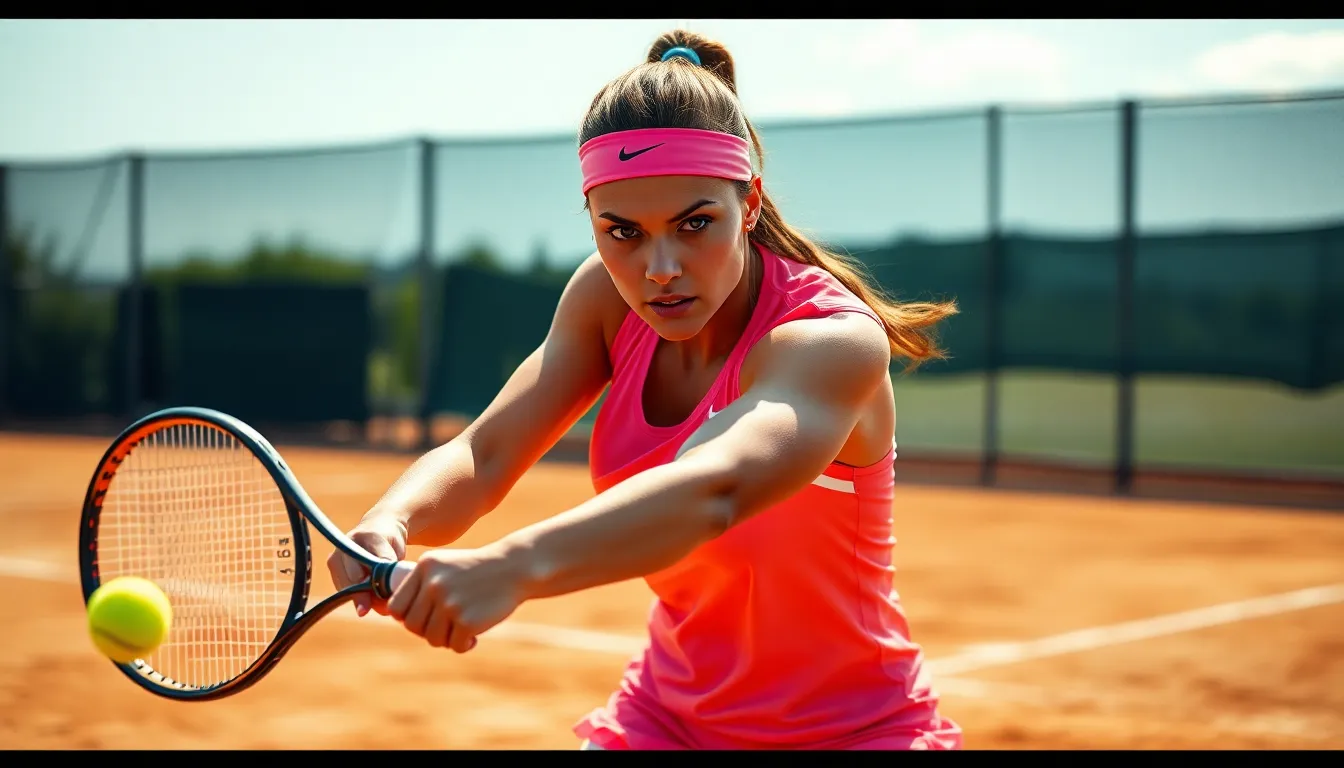
Sustained rallying demands as much mental fortitude as physical skill, creating a psychological battlefield where matches are often won or lost. Top players like Roger Federer, Rafael Nadal, and Iga Swiatek demonstrate that mental strength directly impacts rally performance. Tennis professionals integrate exact psychological strategies alongside physical training to maintain peak performance during extended exchanges.
Mental Resilience and Toughness
Mental resilience forms the foundation for successful rally exchanges in competitive tennis. Players facing high-pressure situations must recover quickly from errors, maintain composure under stress, and continue executing their game plan even though setbacks. Research shows that resilient players manage anxiety and emotional fluctuations more effectively during extended rallies, leading to greater performance consistency.
“I’ve observed that players who develop mental toughness can extend their rally tolerance by 40-50% compared to those with similar technical skills but weaker psychological preparation,” notes Azura Victoria. “During coaching sessions, I emphasize that mental training isn’t supplemental—it’s essential for anyone serious about improving their rally game.”
Emotional Regulation
Emotional control prevents error cascades during crucial rally moments. Players who effectively regulate their emotions maintain cognitive focus and attentional control even when faced with challenging situations. Tennis demands immediate emotional recovery after disappointing points, particularly during extended rallies where emotional reactions can compound into technical breakdowns.
Players who master emotional regulation can:
- Continue executing technically sound shots after making errors
- Prevent negative emotions from affecting subsequent decisions
- Maintain tactical awareness throughout pressure situations
- Preserve energy that would otherwise be wasted on emotional reactions
Motivational Self-Talk and Mental Imagery
Utilizing internal motivational discourse combined with visualization techniques enhances rally performance measurably. Players employing positive self-talk during difficult rallies show improved shot consistency and decision-making under pressure. Mental imagery allows players to rehearse successful rally patterns mentally, creating neural pathways that support execution during actual play.
Azura Victoria shares: “One collegiate player I coached struggled with lengthy baseline exchanges until we implemented a structured self-talk routine. By incorporating exact trigger phrases during practice rallies, she improved her rally tolerance from an average of 6 shots to 15 shots in tournament play within eight weeks.”
Cognitive Focus and Attentional Control
Sustaining attention throughout lengthy rallies separates elite players from average competitors. Error rates increase significantly when focus lapses, particularly after the 8-10 shot mark in extended exchanges. Developing strategies to maintain cognitive efficiency becomes critical for players hoping to dominate baseline rallies.
Effective attentional control includes:
- Maintaining present-moment awareness rather than dwelling on previous points
- Focusing on tactical execution rather than outcome
- Filtering out distractions from spectators, conditions, or internal dialogue
- Shifting attention appropriately between ball tracking, opponent positioning, and court awareness
Passion and Psychological Challenges
Research confirms that harmonious passion positively correlates with mentally tough behaviors that support sustained performance under pressure. Conversely, fear of failure and obsessive passion negatively impact mental toughness during competitive situations. The psychological challenges in tennis include managing perfectionist tendencies and obsessive behaviors that can undermine performance if left unaddressed.
“Tennis attracts many perfectionists,” explains Azura Victoria. “While attention to detail benefits technical development, I’ve seen countless players sabotage their rally performance by fixating on flawless execution. Learning to embrace the imperfect nature of extended rallies often produces breakthrough moments for these players.”
Integrating psychological training alongside physical practice develops the mental skills necessary for sustained rallying. Players who dedicate time to developing both mental and physical aspects gain a important competitive advantage, particularly in matches where extended rallies determine the outcome.
Famous Tennis Players Known for Their Rallying Abilities
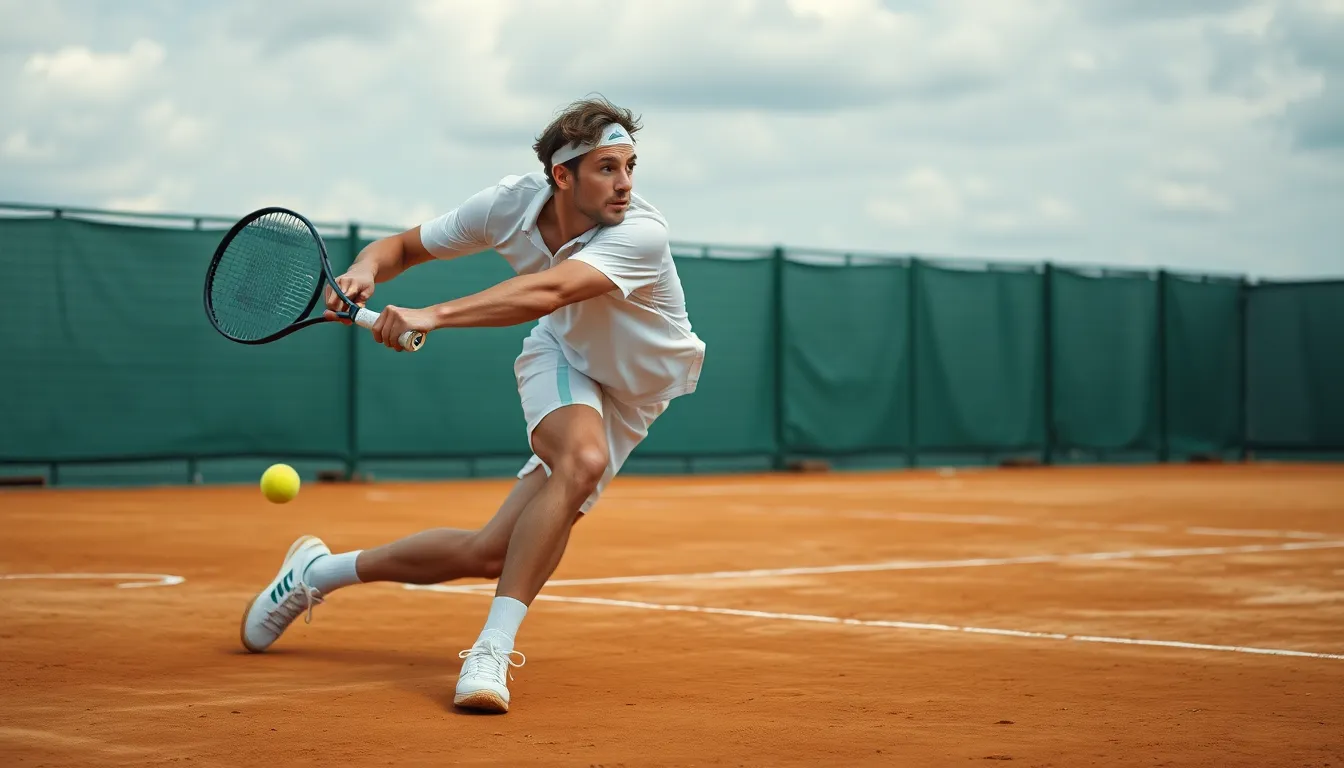
Rafael Nadal stands as one of the greatest rallyers in tennis history, showcasing incredible physicality and consistency during extended exchanges. His endurance and exceptional ball retrieval abilities have become legendary on the professional circuit, particularly on clay courts where rallies tend to be longer.
Novak Djokovic excels in sustained rallies through his remarkable return of serve and skill at keeping the ball deep in the court. His agility and mental toughness allow him to maintain pressure during lengthy exchanges, often forcing errors from opponents who can’t match his consistency.
Andy Murray’s rallying style focuses on absorbing opponents’ pace and outmaneuvering them with strategic angles and precise shot selection. His approach resembles Kimiko Date Krumm’s methodology, creating opportunities through smart positioning rather than relying solely on power shots.
Kimiko Date Krumm earned recognition for her unique ability to absorb and redirect pace with exceptional accuracy. Her rallying technique emphasized smart placement over power, allowing her to outlast physically stronger opponents through tactical intelligence and consistency.
Gilles Simon thrives in extended rallies by maintaining deep, high-quality shots that wear down opponents over time. His consistency and strategic mindset make him particularly dangerous in matches that feature lengthy exchanges, as he patiently exploits errors that emerge from his opponents’ fatigue.
Angelique Kerber utilizes compact swings and impressive athleticism to excel in rally-heavy matches. Her left-handed play creates challenging angles, while her endurance helps physically and mentally drain opponents during extended points—a strategy that contributed significantly to her Grand Slam victories.
Conclusion
Mastering the art of rallying transforms your tennis game from reactive to strategic. By developing consistent technique across different court surfaces you’ll gain the tactical edge needed to control points and expose opponents’ weaknesses.
Remember that rallying excellence comes from a blend of technical skills physical conditioning and mental fortitude. The greatest players in the industry have shown that psychological resilience during extended exchanges often determines match outcomes.
As you incorporate dedicated rally drills into your practice sessions you’ll notice improvements in shot consistency decision-making and stamina. Whether you’re targeting an opponent’s backhand on clay or mixing shot types on hard courts effective rallying will elevate your performance and bring more victories on the court.
Frequently Asked Questions
What makes rallying important in tennis?
Rallying is the backbone of tennis, distinguishing serious players from casual ones. It allows players to control the pace, force opponents to move, and create winning opportunities. Effective rallying combines strategic placement, proper footwork, and mental stamina. Players who master rallying can expose opponents’ weaknesses, conserve energy, and dictate play, transforming their game from reactive to proactive.
How does footwork affect rallying ability?
Good footwork is essential for sustained rallies as it enables players to reach balls with balance and precision. Quick lateral movements and maintaining central court position allow players to respond effectively to shots. According to coach Azura Victoria, players with superior footwork can sustain rallies significantly longer than those with poor movement skills, making it a fundamental aspect of rally success.
What shot selection strategies work best during rallies?
High-percentage shots and strategic depth variation reduce errors and disrupt opponents’ rhythm. Targeting your opponent’s weaker side (often the backhand) creates competitive advantages. Mixing shot types prevents predictability, while maintaining consistent depth pushes opponents out of position. These tactical choices allow players to gradually gain control of points rather than going for winners too early.
How do different court surfaces affect rallying tactics?
Court surfaces significantly impact rallying strategies. Clay courts demand sliding techniques, topspin generation, and patience for longer points. Hard courts reward versatility with a balanced environment where mixing shot types and maintaining central positioning are key. Players must adapt their rally approach based on surface characteristics to maximize their effectiveness and exploit the unique properties of each court type.
What solo drills can improve my rallying skills?
Effective solo drills include ball machine practice to develop consistency, shadow swinging to improve technique, target practice to enhance accuracy, and wall practice for timing and control. These exercises build the fundamental skills needed for successful rallying without requiring a partner. Regular practice of these drills develops muscle memory and shot consistency that transfers directly to match situations.
What partner exercises help build rally consistency?
Partner exercises that enhance rallying include cross-court consistency drills, down-the-line precision exercises, middle-court positioning drills, random direction challenges, and timed rally sessions. These drills build consistency, endurance, and adaptability under pressure. Regular practice with these structured exercises significantly improves shot consistency and overall match performance, especially in extended rally situations.
How important is mental fortitude in tennis rallies?
Mental fortitude is equally important as physical skill in sustained rallying. Top players like Federer, Nadal, and Swiatek utilize psychological strategies during extended exchanges. Mental resilience helps players recover from errors and maintain composure under pressure. Emotional regulation, positive self-talk, and focused attention significantly extend rally tolerance and provide a competitive advantage in matches where extended rallies determine outcomes.
Which professional players are known for exceptional rallying abilities?
Several pros excel at rallying: Rafael Nadal (physicality and consistency on clay), Novak Djokovic (sustained rallies and mental toughness), Andy Murray (strategic approach and absorbing pace), Kimiko Date Krumm (redirecting pace with accuracy), Gilles Simon (deep, high-quality shots), and Angelique Kerber (athleticism and challenging angles with left-handed play). Studying their techniques can provide valuable insights for improving your own rally skills.

